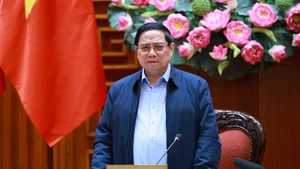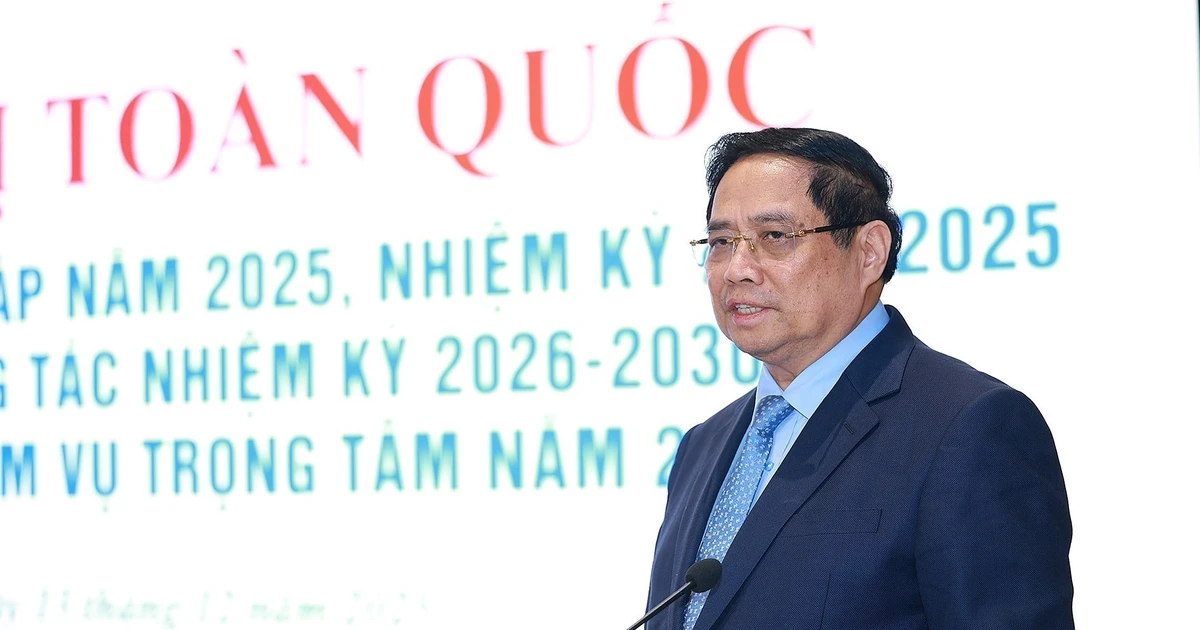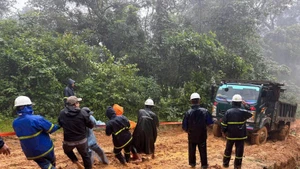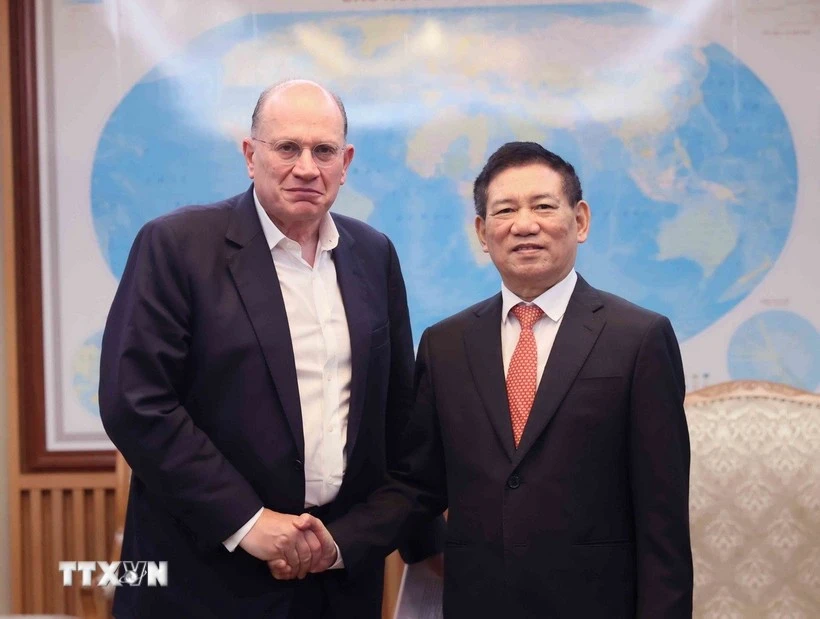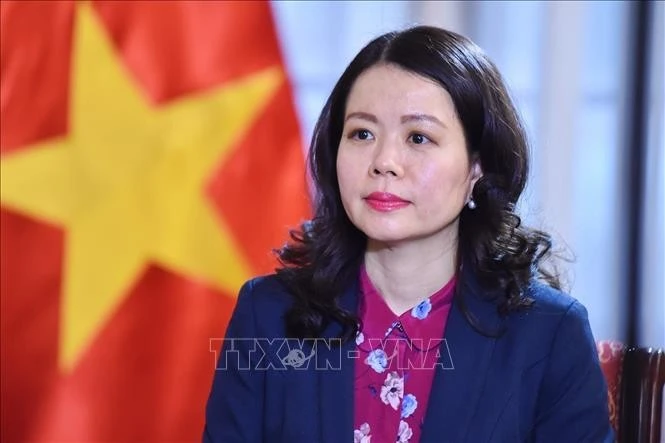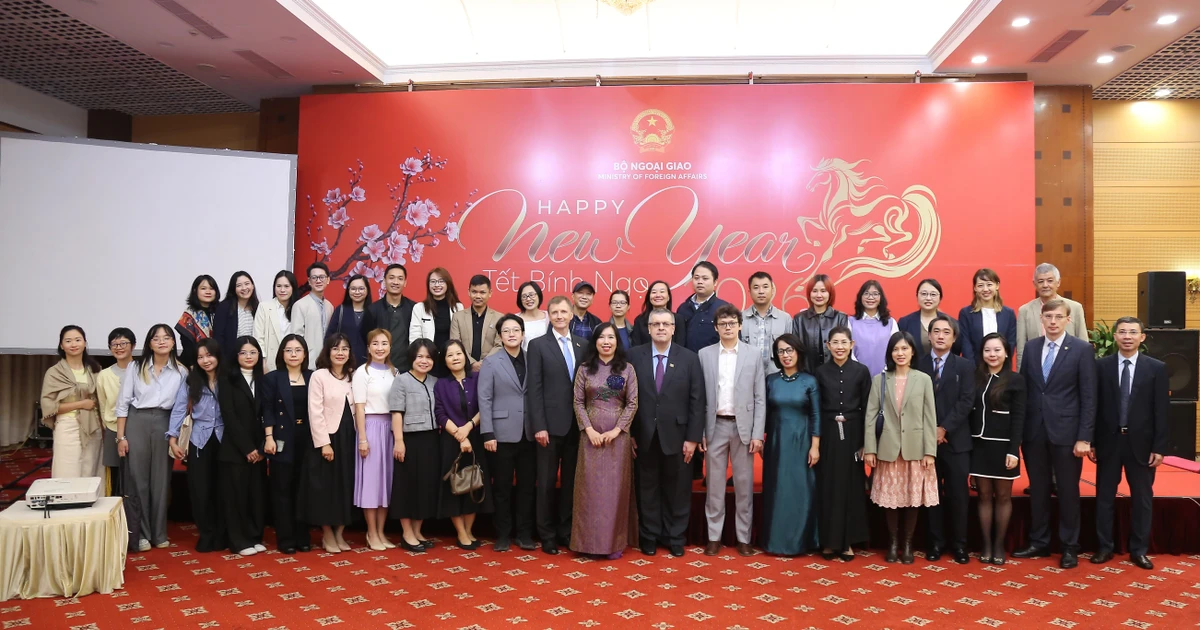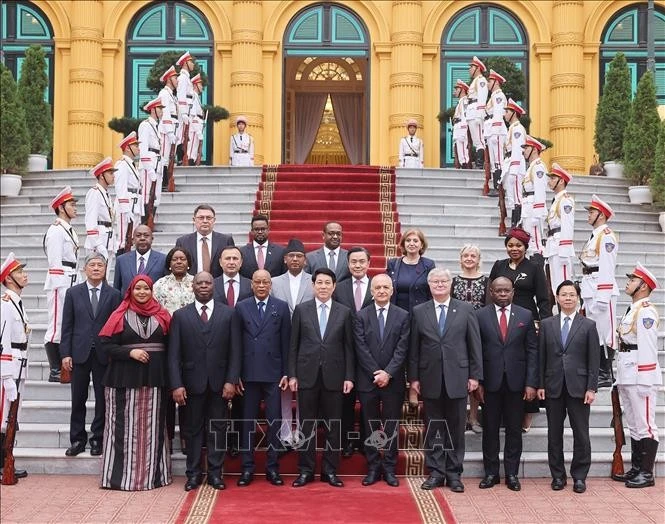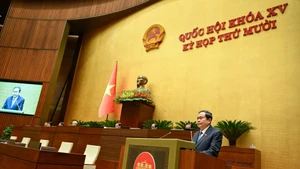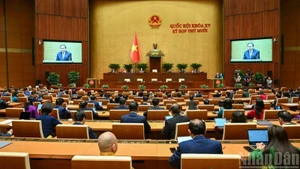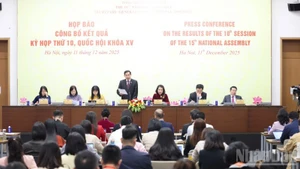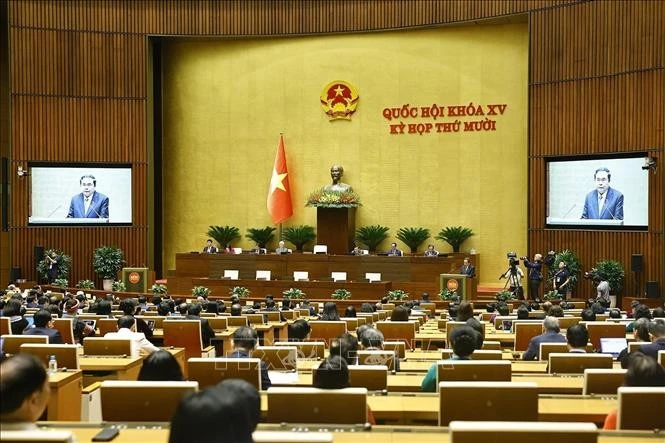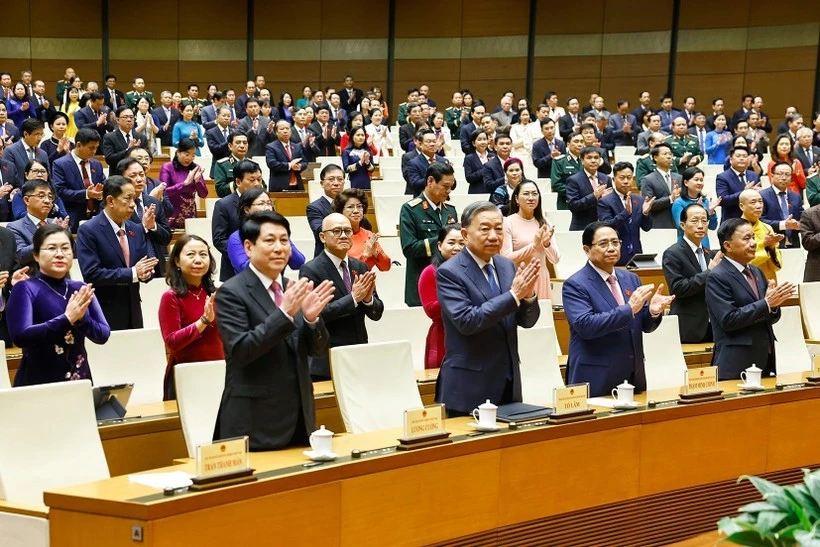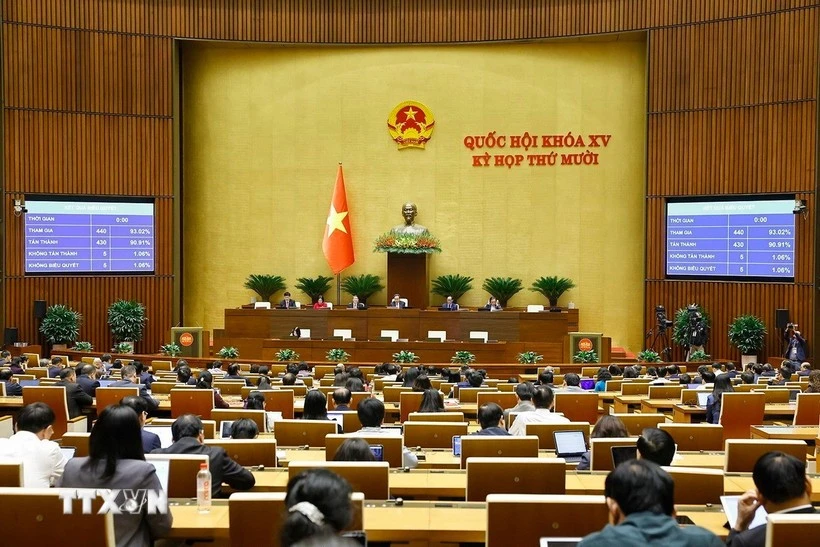On April 26, 1975, the Provisional Revolutionary Government of the Republic of South Vietnam issued a statement affirming that the goal of the people in the south was to abolish the Saigon regime, the tool of American neo-colonialism, and to eliminate the war apparatus and the machinery of repression against the people of South Vietnam.
At 20:45 on April 26, 1975, Vietnamese technical reconnaissance station continued to report: Enemy troops on the islands of Nam Yet, Sinh Ton, and Truong Sa were ordered to retreat onto protective ships to escape the islands. The Forward Command of the Navy immediately instructed Comrade Mai Nang, Commander of Unit C75 (the unit tasked with liberating the islands of the Truong Sa Archipelago) aboard ship 673 at Song Tu Tay, to "urgently dispatch forces to liberate the remaining islands, ensuring no other force exploits the opportunity to seize them."
On the morning of April 26, 1975, the forward section of the Ho Chi Minh Campaign Command moved down to Cam Xe, north of Dau Tieng.
That same morning, enemy troops guarding the outer perimeter of the Nuoc Trong base scoured surrounding areas and clashed with scouts from Division 304. By 07:30, the enemy deployed two aircraft to strike Regiment 9 of Division 304. Throughout the day, enemy artillery and air forces continuously attacked the northwest area of Nuoc Trong and Long Thanh. Right before the campaign's "zero hour", the enemy launched fierce air raids against the positions of Corps 2.
At 17:00 on April 26, 1975, the Ho Chi Minh Campaign officially commenced. Intense artillery fire from dozens of batteries bombarded enemy targets at Trang Bom, Ho Nai, Bien Hoa, Nuoc Trong, Long Thanh, Duc Thanh, Ba Ria, as infantry divisions from Corps 4 and 2 began their assaults.
On the eastern front, under Corps 2’s command, Regiment 9 of Division 304 attacked the Armoured School; Regiment 24 assaulted the Infantry School at Nuoc Trong base. By 18:45, Regiment 9 had captured the Armoured School. The enemy regrouped around the Infantry and Special Forces Schools and moved reinforcements from Bien Hoa to counterattack.
At 17:35, on the front of Division 325, Regiment 46 swiftly captured Dong Huu Bridge and advanced to seize Phuoc Thieng; Regiment 18 encircled and eliminated the Binh Son target, later serving as the division's reserve. Regiment 101 launched an initial attack on the centre of Long Thanh , facing strong resistance after early success.
Battalion 2 (a reserve unit) of Regiment 101 entered the battle, supported by Regiment 46, striking Thai Lac. Artillery Regiment 84 suppressed enemy artillery positions. Anti-aircraft units, along with the 12-A.72 missile company, closed in on the town to attack enemy aircraft and protect Regiment 101's advance. The enemy stubbornly continued to resist.
A unit from Battalion 3 of Regiment 101 and two tanks from Brigade 203 advanced along Route 15 but mistakenly moved into the Nuoc Trong area, where they destroyed two enemy tanks and eliminated several enemy troops, supporting the ongoing battle of Regiment 9 of Division 304. Upon realising the error, Battalion 3's commander immediately redirected the forces and tanks back towards Long Thanh Town.
On the front of Division 3 of Military Region 5, at 19:00, Regiment 141 launched an attack on Ba Ria Town. Tank Company 4 carried Company 3 of Battalion 7 along Le Loi Road into the town centre. After some initial confusion, the enemy began resisting.
During the night of April 26, 1975, Regiment 141 held its captured positions, pushed Battalion 8 towards Van Kiep, and deployed Battalion 5 to cut off Ba Ria Town from the Van Kiep base, thus preventing enemy from regrouping.
At 20:00 on April 26, 1975, Regiment 12 of Division 3 captured Duc Thanh, Dat Do, and Long Dien, then joined local forces to eliminate coastal positions and advance to surround Ba Ria Town and Van Kiep Training Centre.
In the southeast direction, under Corps 4's responsibility, Regiments 270 and 273 (of Division 341), reinforced with a tank battalion, a mixed anti-aircraft battalion, and tactical artillery at the regimental and battalion levels, attacked the Trang Bom strongpoint, a critical link in the enemy’s defensive line. Fierce battles between our tanks and armoured vehicles and those of the enemy raged for hours.
Meanwhile, Regiment 266 attacked the enemy defence area from Hung Nghia to Bau Ca, wiping out the remnants of Division 18 and Armoured Regiment 5 of the enemy. On the same day, Division 6 deployed south of Route 4 to attack Ho Nai, while Brigade 52 served as reserve at the Dau Giay junction.
Forces in the outer zones on the east and southeast simultaneously captured key bridges: Ghenh, Rach Chiec, and Rach Cat. Although the enemy temporarily recaptured them, we prepared to strike back. Special Forces Unit 116 seized the Dong Nai Highway Bridge, repelling enemy counterattacks and firmly securing the bridges.
On the northern front, by April 26, 1975, units of Corps 1 had occupied all starting positions for the assault. A section of Division 312 closed in on Chanh Luu, Phuoc Vinh, and Phuoc Hoa bases, drawing enemy forces, forcing them to send Regiment 8 of Division 5 to block Route 14. That night, the 1st Corps Command moved from Rach Be to Van Huong to directly oversee the advance.
In the west and southwest on April 26, 1975, Group 232 (consisting of Divisions 3, 5, 9 of Military Zone 8 and several other units) completed preparations. Division 8 quickly cut Route 4 from Long Dinh to Tan Hiep. Division 5 approached Route 4 between Ben Luc and Tra Cao. Infantry Regiment 16 attacked An Lac and Binh Dien.
Local My Tho military battalion, together with armed district forces, captured the stretch from Long Dinh to Bung Mon. Special Forces Battalion 263 and Engineer Battalion 291, together with Cai Be District guerrillas, seized the stretch from Hoa Khanh to north of My Thuan. At 20:00 on April 26, 1975, Division 3 captured Duc Thanh.
From April 5 to April 26, 1975, to prepare for the Ho Chi Minh Campaign, while exploiting and transporting resources, we had moved into the battlefield 10,100 tonnes of ammunition, 2,300 tonnes of food and medicine, and 2,600 tonnes of petrol and oil. Many vehicle-repair, artillery-repair, and tank-repair stations were set up along the routes to support the campaign’s mobility.
Also on April 26, 1975, the Military Commission and the Southern Command sent a letter encouraging all officers and soldiers: "The decisive historic battle for the final victory of the nation has begun. All liberation armed forces units are tasked with exerting full strength to attack and liberate their homelands and bases, while also closely coordinating to ensure complete victory on the Saigon - Gia Dinh front. "
On the same day, the Party Committee and Military Region 9 Command sent letters to rally and launch a strong and widespread offensive across all districts and communes with the spirit of a general offensive and uprising, aiming for self-liberation at the district and commune levels. The Military Region ordered provincial forces to close in on town edges, preparing for a general offensive on the night of April 29 and dawn of April 30, following the approved plan.
On the enemy side, in Saigon, under American pressure, on April 26, 1975, Tran Van Huong resigned. That same day, General Nguyen Khoa Nam, commander of Corps 4 of the puppet army, held a meeting with subordinate generals at the Dong Tam base (My Tho), resolving to defend the Mekong Delta, aiming to concentrate forces and hold the area of My Tho - Vinh Long - Can Tho, in case Saigon fell. On the night of April 26, 1975, Nguyen Van Thieu and Tran Thien Khiem fled Saigon by plane.


